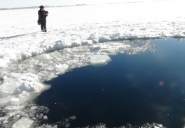NESSC research has an extensive range, from the freezing poles to the heat of the African tropics. PhD candidate Loes van Bree’s research involves her comparing the current global
/ read more

Archieven
Conference was a great success (pictures!)
A lot of presentations, drinks, food, small talk and overall socializing defined the two day Darwin/SIAM/NESSC conference. Thanks to the effort of all participants and the organisation the event was
/ read moreIn between ice ages

Dr. Sarah Bradley from Utrecht University studies the history and behaviour of ice sheets over the last interglacial, the period in between two ice ages. “This was a period
/ read morePlant traits predict susceptibility to forest fires
Fires in tundra areas and subarctic regions Forest fires cause high CO2 emissions and so contribute to a rise in atmospheric temperature. ‘Where and when forest fires develop also depends
/ read more